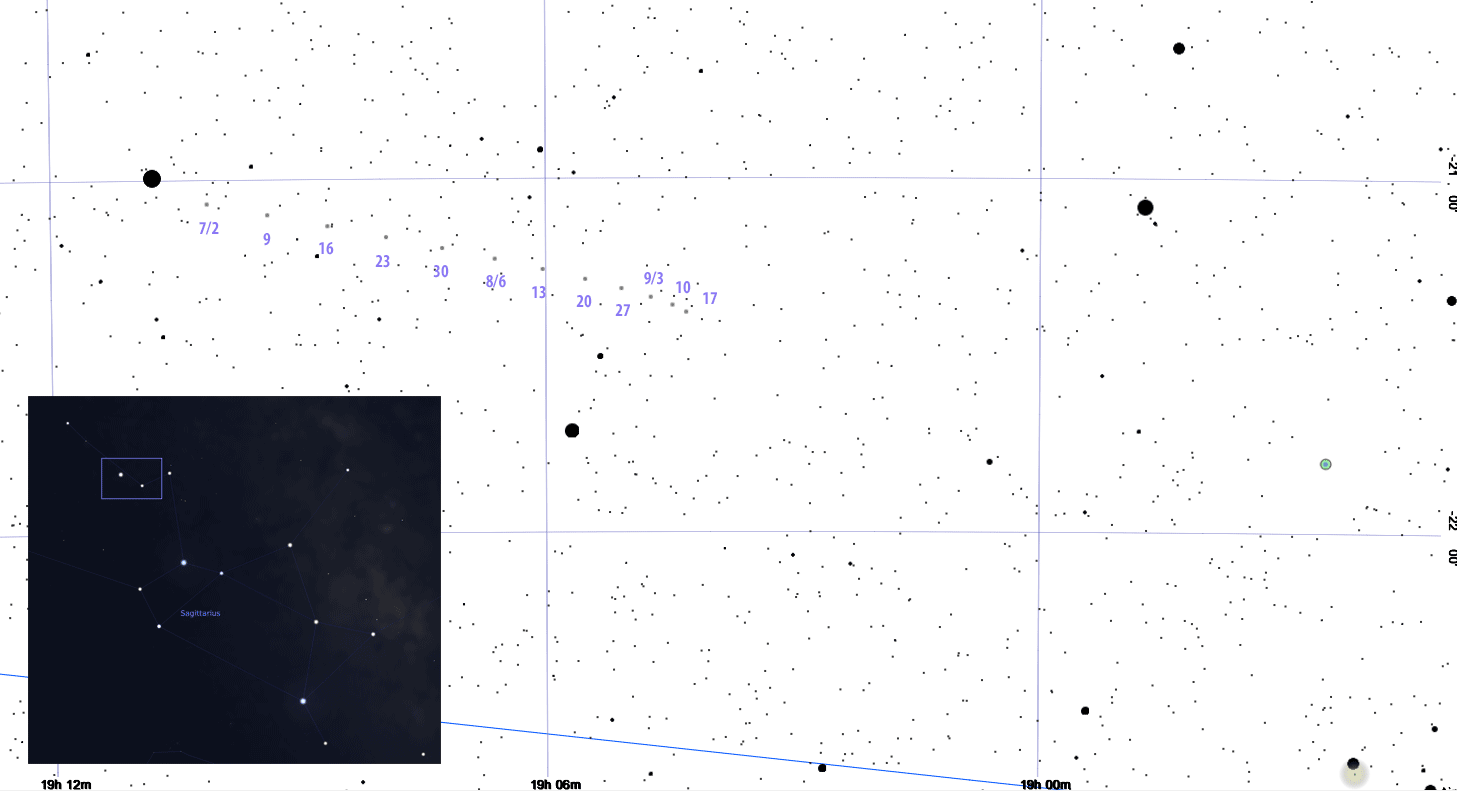Finding Pluto
July 2016 :
After last year’s visit by the New Horizons spacecraft, Pluto is no longer as mysterious and enigmatic as it once was. Gone are the days of peering across our planetary system at a dim point of light barely shimmering some 10,000 times dimmer than the stars we can see with just our eyes, not knowing what it really looks like. This dim point of light is now known to be a dynamic world with ice mountains, shifting plates, and atmospheric haze. A world that has place names such as Tombaugh Regio, Cthulhu Regio and Sputnik Planum. Although we won’t see any detail in even our biggest telescopes other than the dim point of light we’ve always seen, it still fascinates us and draws up back year after year as we pay our own visit to this amazingly dynamic world worthy of exploration.
Finding Pluto may be simpler than you think. If you’re a visual observer and have access to a 12-inch or larger telescope, all you’ll need is a clear, moonless night to locate it. If you’re an imager, you may not need anything larger than a 3-inch telescope, but you’ll need to have a polar aligned mount that tracks in order to take a long enough exposure to capture it.
In order to find Pluto, we need a highly detailed star chart or a software planetarium to plot its position. In 2016, Pluto reaches opposition on July 7 and shines at a magnitude of 14.1.
If you remember hunting Pluto last year, you’ll be familiar with the part of eastern Sagittarius where Pluto remains this year. You’ll be starting in the “teaspoon” asterism. The chart below was produced by TheSkyX and shows the location of Pluto every week on Saturdays, 2300 EDT.
Good luck and happy hunting. If you manage to find it or capture an image, please send your report to jim@distantgalaxy.com for future publication.




